当前位置:
X-MOL 学术
›
J. Am. Coll. Cardiol.
›
论文详情
Our official English website, www.x-mol.net, welcomes your
feedback! (Note: you will need to create a separate account there.)
2024 ACC Expert Consensus Decision Pathway on Practical Approaches for Arrhythmia Monitoring After Stroke: A Report of the American College of Cardiology Solution Set Oversight Committee
Journal of the American College of Cardiology ( IF 21.7 ) Pub Date : 2024-12-17 , DOI: 10.1016/j.jacc.2024.10.100 Michael T. Spooner, Steven R. Messé, Seemant Chaturvedi, Monika M. Do, Ty J. Gluckman, Janet K. Han, Andrea M. Russo, Sherry J. Saxonhouse, Newton B. Wiggins
中文翻译:

2024 年 ACC 中风后心律失常监测实用方法专家共识决策途径:美国心脏病学会解决方案集监督委员会的报告
Nicole M. Bhave,医学博士,FACC,主席Niti R. Aggarwal,医学博士,FACCKatie Bates,ARNP,DNPJohn P. Erwin III,医学博士,FACCMartha Gulati,医学博士,理学硕士,FACCDharam J. Kumbhani,医学博士,SM,FACCGurusher S. Panjrath,MBBS,FACCBarbara Wiggins,药学博士,FACCMegan Coylewright,医学博士,公共卫生硕士,FACC,当然会员
为了便于解释本 ECDP 中提供的建议,编写委员会按照规定做出了具体假设。
中风后的心律失常监测需要三个重要步骤(图 1)。首先是多学科评估,以确定中风的任何潜在机制。最终,中风可能被确定为隐源性。第二步是风险评估,以确定心律失常在卒中中起作用或可能在未来的卒中或非卒中发病率中起作用的可能性。最后一步是为患者选择最佳监测策略,该策略
许多推测为心脏源性的缺血性卒中患者需要抗凝治疗,以降低未来事件的风险。需要考虑长期抗凝治疗的疾病包括 AF、左心房或左心室血栓、消融后左心耳电隔离、风湿性二尖瓣狭窄伴栓塞事件、机械心脏瓣膜、心脏淀粉样变性、左心室致密化不全、射血分数严重降低(尤其是
Cathleen Biga,MSN,FACC,总裁Cathleen C. Gates,首席执行官Richard J. Kovacs,医学博士,MACC,首席医疗官Brendan Mullen,高级执行副总裁Joseph M. Allen,MA,科学与质量团队负责人Amy Dearborn,决策科学团队负责人Ashleigh M. Covington,MA,决策科学交付团队负责人Alan Shinkar,公共卫生硕士,决策科学交付助理Grace D. Ronan,高级生产和运营经理, 科学出版物和指南
Journal of the American College of Cardiology ( IF 21.7 ) Pub Date : 2024-12-17 , DOI: 10.1016/j.jacc.2024.10.100 Michael T. Spooner, Steven R. Messé, Seemant Chaturvedi, Monika M. Do, Ty J. Gluckman, Janet K. Han, Andrea M. Russo, Sherry J. Saxonhouse, Newton B. Wiggins
Section snippets
Solution Set Oversight Committee
Nicole M. Bhave, MD, FACC, ChairNiti R. Aggarwal, MD, FACCKatie Bates, ARNP, DNPJohn P. Erwin III, MD, FACCMartha Gulati, MD, MS, FACCDharam J. Kumbhani, MD, SM, FACCGurusher S. Panjrath, MBBS, FACCBarbara Wiggins, PharmD, FACCMegan Coylewright, MD, MPH, FACC, Ex OfficioTable of Contents
- 1.Introduction 2
- 2.Assumptions and Definitions 3
- 2.1.General Clinical Assumptions 3
- 2.2.Definitions 3
- 3.Pathway Summary Graphic 4
- Figure 1. Pathway Summary Graphic 4
- 4.Description, Rationale, and Implication of Pathway 4
- 4.1.Adults With Stroke of Presumed Cardiac Origin Who Require Anticoagulation 4
- 4.1.1.Role for Monitoring 4
- Figure 2. Flowchart of Poststroke Monitoring and Treatment Strategy 5
- 4.1.1.Role for Monitoring 4
- 4.2.Adults With Ischemic Stroke From Presumed Small- or Large-Vessel Disease 5
- 4.2.1.Role for Monitoring 7
- 4.3.Adults With Ischemic Stroke and Unclear Source 8
- 4.3.1.Role
- 4.1.Adults With Stroke of Presumed Cardiac Origin Who Require Anticoagulation 4
Assumptions and Definitions
To facilitate interpretation of the recommendations provided in this ECDP, specific assumptions were made by the writing committee, as specified.Pathway Summary Graphic
Arrhythmia monitoring after a stroke requires three important steps (Figure 1). The first is a multidisciplinary evaluation to identify any potential mechanisms for the stroke. Ultimately, the stroke may be determined to be cryptogenic. The second step is risk assessment to determine the likelihood that a cardiac arrhythmia played a role in the stroke or may play a role in future stroke or nonstroke morbidity. The final step is choosing the optimal monitoring strategy for the patient thatAdults With Stroke of Presumed Cardiac Origin Who Require Anticoagulation
Many patients with an ischemic stroke of presumed cardiac origin require anticoagulation to reduce the risk of future events. Conditions that warrant consideration for long-term anticoagulation include AF, left atrial or left ventricular thrombus, postablation electrical isolation of the left atrial appendage, rheumatic mitral stenosis with an embolic event, mechanical heart valves, cardiac amyloidosis, left ventricular noncompaction, severely reduced ejection fraction (particularly whenPresident and Staff
Cathleen Biga, MSN, FACC, PresidentCathleen C. Gates, Chief Executive OfficerRichard J. Kovacs, MD, MACC, Chief Medical OfficerBrendan Mullen, Senior Executive Vice PresidentJoseph M. Allen, MA, Team Lead, Science and QualityAmy Dearborn, Team Lead, Decision ScienceAshleigh M. Covington, MA, Team Lead, Decision Science DeliveryAlan Shinkar, MPH, Associate, Decision Science DeliveryGrace D. Ronan, Senior Production and Operations Manager, Scientific Publications and Guidelines中文翻译:

2024 年 ACC 中风后心律失常监测实用方法专家共识决策途径:美国心脏病学会解决方案集监督委员会的报告
部分片段
解决方案集监督委员会
Nicole M. Bhave,医学博士,FACC,主席Niti R. Aggarwal,医学博士,FACCKatie Bates,ARNP,DNPJohn P. Erwin III,医学博士,FACCMartha Gulati,医学博士,理学硕士,FACCDharam J. Kumbhani,医学博士,SM,FACCGurusher S. Panjrath,MBBS,FACCBarbara Wiggins,药学博士,FACCMegan Coylewright,医学博士,公共卫生硕士,FACC,当然会员
目录
1.引言 2
2.假设和定义 3- 2.1.一般临床假设 3
- 2.2.定义 3
3.途径总结 图 4- 图 1.Pathway Summary 图形 4
4.途径 4 的 描述、基本原理和含义- 4.1.需要抗凝治疗的 疑似心脏源性中风的成人 4
- 4.1.1.监控 的作用 4
- 图 2.卒中后监测和治疗策略 流程图 5
- 4.1.1.监控 的作用 4
- 4.2.疑似小血管或大血管疾病 引起的缺血性中风成人 5
- 4.2.1.监视 7 的角色
- 4.3.缺血性中风和来源 不明的成人 8
- 4.3.1.角色
- 4.1.需要抗凝治疗的 疑似心脏源性中风的成人 4
假设和定义
为了便于解释本 ECDP 中提供的建议,编写委员会按照规定做出了具体假设。
Pathway 摘要图
中风后的心律失常监测需要三个重要步骤(图 1)。首先是多学科评估,以确定中风的任何潜在机制。最终,中风可能被确定为隐源性。第二步是风险评估,以确定心律失常在卒中中起作用或可能在未来的卒中或非卒中发病率中起作用的可能性。最后一步是为患者选择最佳监测策略,该策略
需要抗凝治疗的疑似心源性卒中成人
许多推测为心脏源性的缺血性卒中患者需要抗凝治疗,以降低未来事件的风险。需要考虑长期抗凝治疗的疾病包括 AF、左心房或左心室血栓、消融后左心耳电隔离、风湿性二尖瓣狭窄伴栓塞事件、机械心脏瓣膜、心脏淀粉样变性、左心室致密化不全、射血分数严重降低(尤其是
总裁和员工
Cathleen Biga,MSN,FACC,总裁Cathleen C. Gates,首席执行官Richard J. Kovacs,医学博士,MACC,首席医疗官Brendan Mullen,高级执行副总裁Joseph M. Allen,MA,科学与质量团队负责人Amy Dearborn,决策科学团队负责人Ashleigh M. Covington,MA,决策科学交付团队负责人Alan Shinkar,公共卫生硕士,决策科学交付助理Grace D. Ronan,高级生产和运营经理, 科学出版物和指南



















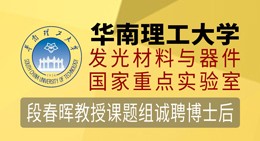
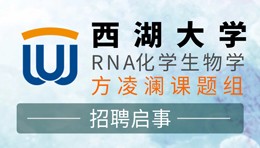
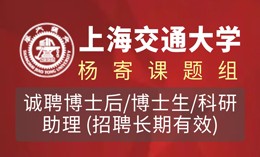



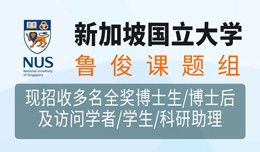
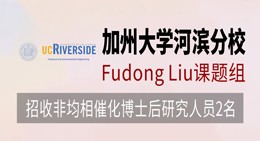
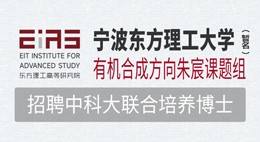



 京公网安备 11010802027423号
京公网安备 11010802027423号